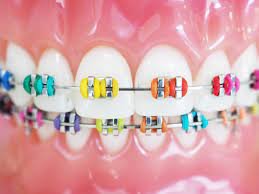Dental bonding Miami is the most effective and affordable option in the whole procedure of restoration for all those people who have structurally damaged or broken teeth.
Now, for whom does this treatment work effectively?
Well, the answer to this is that this procedure works more effectively in adults, and this treatment is also popular among adults. Dental bonding takes little time to get cured or treated and hardly takes one or two appointments. In addition that it is crucial to note that dental bonding is non-invasive and can be used by adults and children.
Which are the Dental Bonding Options?
Generally, two main types of dental bonding options exist: direct and indirect. In both cases, the composite resin is used. This substance adheres to teeth using a unique adhesive termed unfilled resin. The most common dental bonding substance dentist Miami shores uses composite resin in direct and indirect restoration. The substance is soft, putty-like, and tooth-colored. Composite resin, a highly malleable and flexible dental material, can treat stains, chipping, and cracks in teeth. Dental experts also utilize the substance as a cavity-filling material.
Now, let us discuss in detail what direct and indirect dental bonding means.
● Direct Dental Bonding means :
This is the most popular dental bonding treated by the orthodontist hallandale fl offers an immediate solution for teeth with chips or decay. This restoration can restore the natural teeth’ appearance, shape, color, and functionality. Direct application of the tooth-colored composite to the tooth is required for the operation. A high-intensity light is used to solidify the composite resin once it has been molded into the appropriate shape. The Miami shores dentist will polish and smooth the teeth, which takes 30 to 60 minutes to complete.
Composite veneer bonding is an additional choice. This cosmetic procedure changes the tooth’s size, shape, and color. Additionally, it can be used by the dentist to alter the length of teeth and close spaces between teeth. Composite veneers can endure up to eight years with adequate maintenance.
● Indirect Dental Bonding :
On the flip side of direct dental bonding offered, this one describes indirect bonding, which, unlike direct bonding, needs two dental visits but heals a fractured or diseased tooth. The dentist will first clean the afflicted tooth and take impressions. The dental laboratory will next create a dental inlay, onlay, or filling using the impressions that were taken earlier. Composite resin can be used to make indirect restorations. Because the lab professionals utilize high heat to cure the repairs, these are very strong and long-lasting.
Which one should you choose among these two?
This query is valid after reading the above two types of dental bonding. You might need clarification about which dental bonding you should choose. The answer to this depends on how critical your case is. If you have a more severe problem, ask the dentist to examine and define which dental bonding you should use.
Winding it up :
We hope you liked the article and are now familiar with the options available in the dental bonding period. Dental bonding composite material is more effortless than tooth enamel naturally. Patients must practice good oral hygiene to maintain dental bonding because it is susceptible to stains and chips.
CONGRATULATION! YOU’VE FINISHED THIS BLOG.





